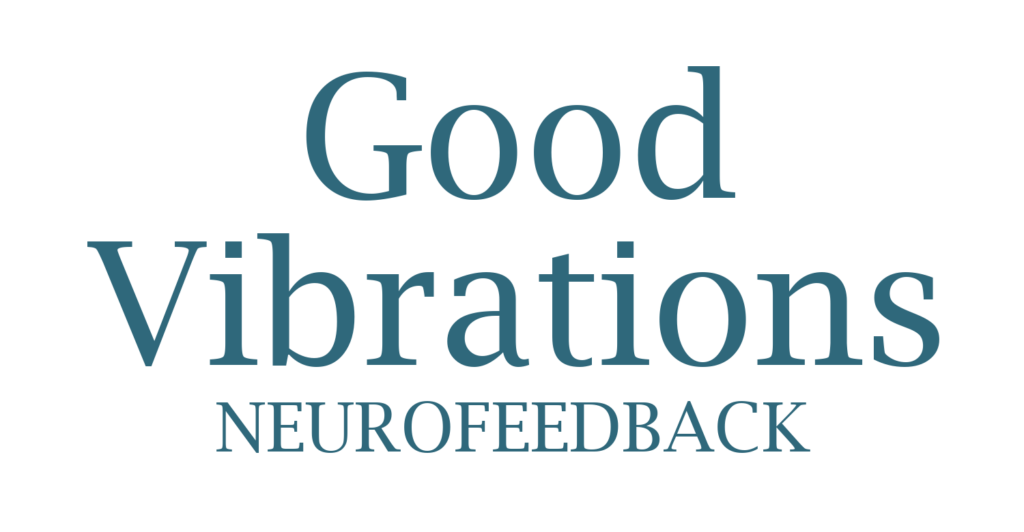What is Neuroptimal?
NeurOptimal® Neurofeedback is the system used by the Good Vibrations Neurofeedback Clinic. It is a sophisticated brain training tool designed to help optimize your life. It has evolved over the last 30 years from two individuals, clinical psychologists Doctors Valdeane and Susan Brown. They have been offering training sessions in their private office with over 4 million sessions logged and thousands of people using it on a regular basis.
The NeurOptimal® system measures the differences in the electrical signal emitted from the scalp. This electrical signal is mathematically measured 256 times per second by voltage changes, and is read through the NeurOptimal® software program which initiates an interruption in the audio (and sometimes video) stream as it detects when a change is about to happen. This small minute interruption is enough to warrant the individual to notice.
The brain then decides if it means to shift or if it was shifting unnecessarily. Think of it like when we run over the rumble strips on the side of the road: if it was unintentional the driver quickly responds by moving back on the road; if it was an intentional motion (it may have been to change a tire) the driver then continues to drive off the road.
Training with NeurOptimal® allows an individual to observe their brain activity and optimize their mindset. It is a unique tool for catalyzing personal transformation.
How Does NeurOptimal® Dynamical Neurofeedback® Differ from Linear Neurofeedback?
Most systems require the practitioner to first make a diagnosis in some way, such as using past medical or psychological history, QEEG (brain maps), or standardized testing to create a protocol-driven program. For this reason, most other systems require the administrator to be a licensed healthcare practitioner.
They may conduct a snapshot of your brain showing the dominant frequencies it is producing in which location at that time. Training usually involves a minimal selection of frequencies in different areas of the brain. The focus of training will be on one collection of issues for a period of weeks or months until, hopefully, there is resolution. At this point, the training will be adjusted to address another symptom cluster and so on. It is a linear, stepped process, and sometimes the frequencies needed for one set of symptoms can be wrong for another, which can lead to confusion and trial-and-error.
With NeurOptimal®, there is no need for diagnosis. NeurOptimal® is designed to give the brain continual information about what it has just done. The brain then uses this information to organize itself. As soon as NeurOptimal® detects that the brain is about to make a change, feedback is provided through a very brief pause in the sound. The brain then adapts itself in response to the information, which then provides new and different information for NeurOptimal® to mirror back.
With NeurOptimal® (or Dynamical Neurofeedback®) the brain is simply interacting adaptively with itself moment by moment, not striving to produce more of some frequency and less of another. While those kinds of changes may be observed, they occur as part of an intrinsic self-organizing principle rather than an artificially imposed constraint. This is the inherent power and safety of NeurOptimal® and how it invites very seamless change.-
How do NeurOptimal ® Sessions Work?
NeurOptimal® is effortless brain training. After applying three clips and two small sensors, you simply relax in a recliner and listen to captivating music. NeurOptimal® does the rest. NeurOptimal® ’s Dynamical Neurofeedback® technology measures brain behavior from .01 hertz to 64 hertz, collecting and analyzing data 256 times per second or over 500,000 times in a single 33-minute session. This sophisticated process is exclusive to NeurOptimal®’s Dynamical Neurofeedback® .
When the client’s brain falls into unhealthy patterns, feedback is produced in the form of static in the audio (and video, if used). When an individual has that information and sees what they are doing or not doing, their brain automatically adjusts toward a more balanced function.
